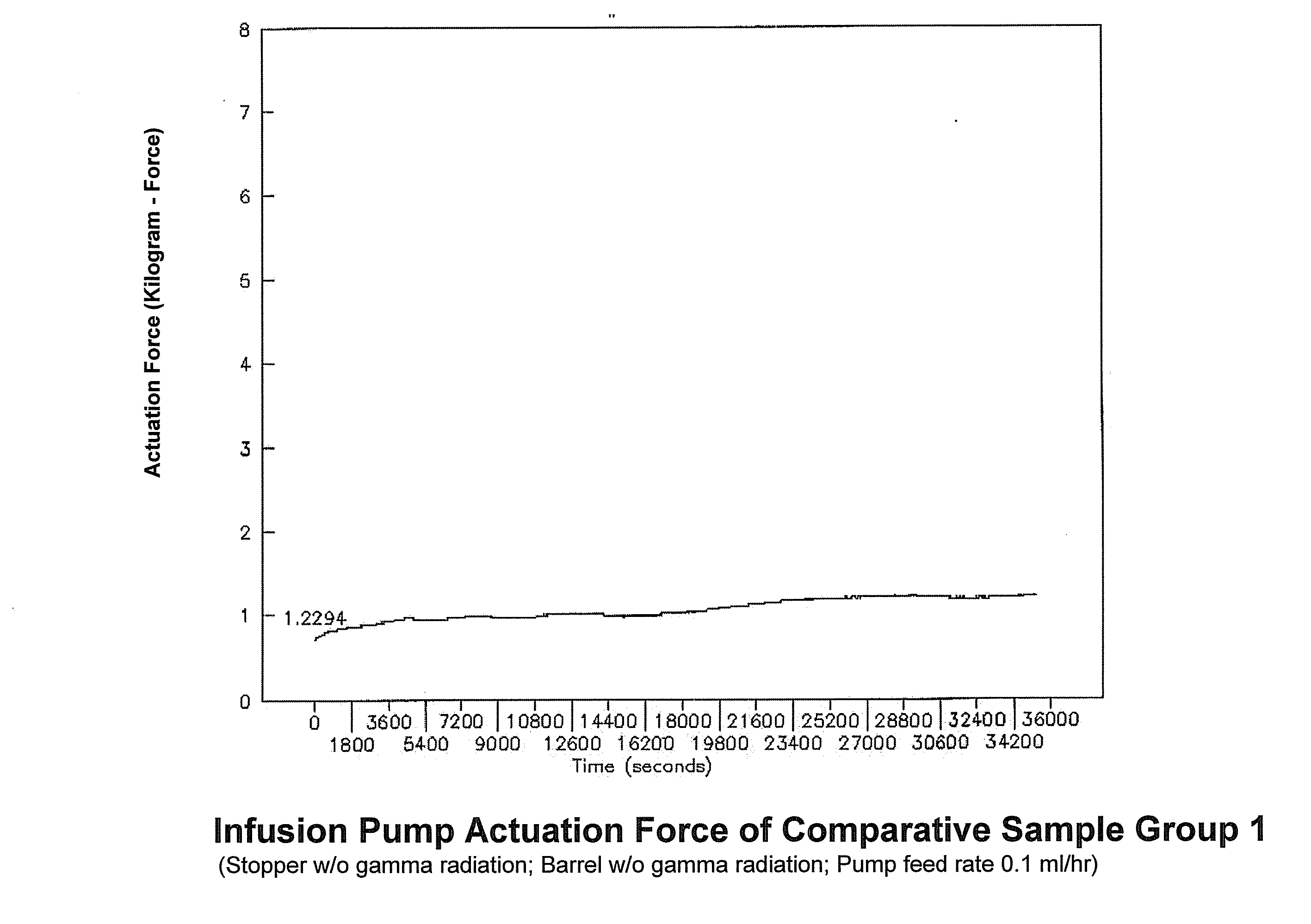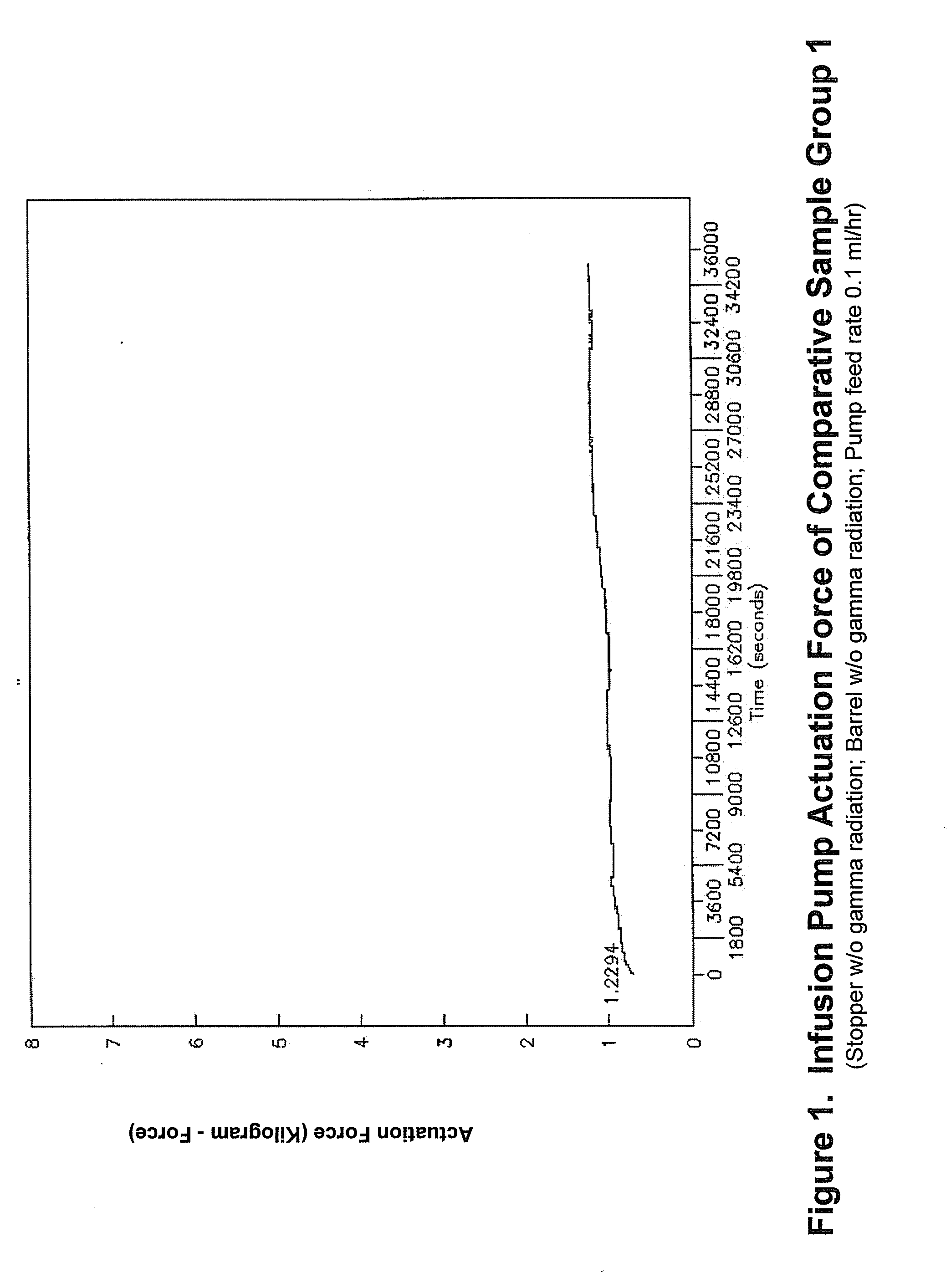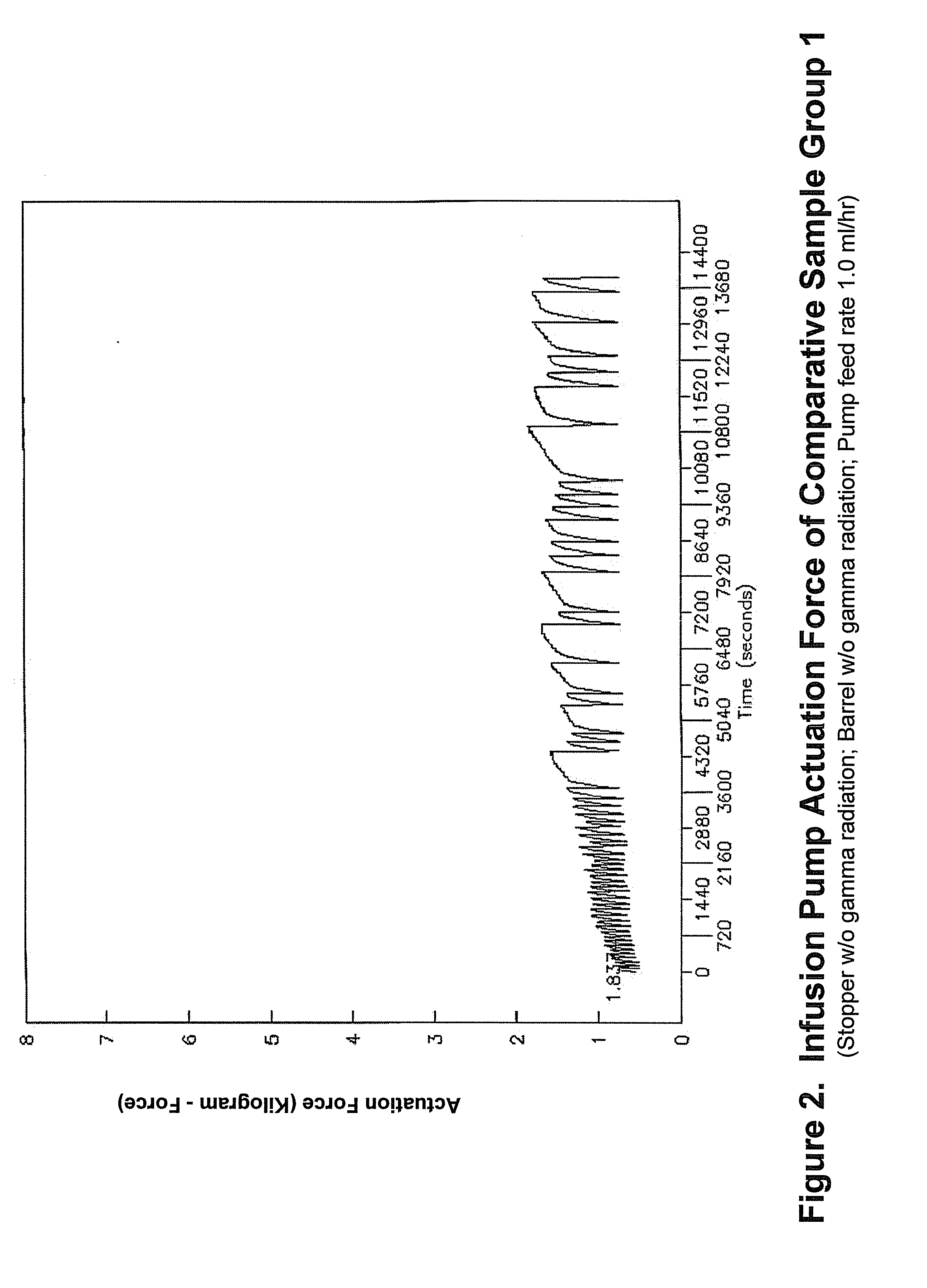Medical Components Having Coated Surfaces Exhibiting Low Friction and Methods of Reducing Sticktion
- Summary
- Abstract
- Description
- Claims
- Application Information
AI Technical Summary
Benefits of technology
Problems solved by technology
Method used
Image
Examples
example
[0089] Syringe barrels for 10 and 50 ml syringes were coated with coating compositions according to the present invention. The syringe barrels were formed from a cyclic polyolefin. The interior surface of each barrel was coated with DC 360 polydimethylsiloxane having a viscosity of 12,500 cst, available from Dow Corning. Helvoet FM457 (Butyl-1) and FM460 (Butyl-2) butyl rubber and Kokoku SBR syringe stoppers were coated with a conventional polydimethylsiloxane having a viscosity of 100,000 cst or 300,000 cst. The syringe barrels and stoppers were irradiated using gamma radiation at dosages specified in Table 1.
[0090] Each syringe was assembled and filled with 10 or 50 ml of deionized water and autoclaved at 124° C. for 30 minutes.
[0091] Breakout forces, breakloose forces, and sustaining forces may be conveniently measured on a universal mechanical tester or on a testing machine of the type having a constant rate of cross-head movement, as described in detail below. The syringe ass...
PUM
| Property | Measurement | Unit |
|---|---|---|
| Kinematic viscosity | aaaaa | aaaaa |
| Kinematic viscosity | aaaaa | aaaaa |
| Kinematic viscosity | aaaaa | aaaaa |
Abstract
Description
Claims
Application Information
 Login to View More
Login to View More - R&D
- Intellectual Property
- Life Sciences
- Materials
- Tech Scout
- Unparalleled Data Quality
- Higher Quality Content
- 60% Fewer Hallucinations
Browse by: Latest US Patents, China's latest patents, Technical Efficacy Thesaurus, Application Domain, Technology Topic, Popular Technical Reports.
© 2025 PatSnap. All rights reserved.Legal|Privacy policy|Modern Slavery Act Transparency Statement|Sitemap|About US| Contact US: help@patsnap.com



